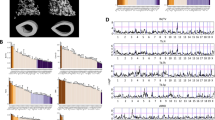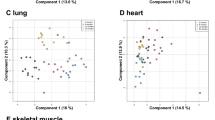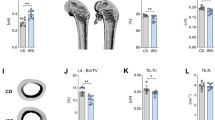Abstract
ATTENTION has been directed to skeletal variations within inbred mice strains by Grüneberg1 and by McLaren and Michie2. The latter workers have surveyed most of the available substrains of C 3 H mice and have found that they fall into two general categories having either five or six lumbar vertebræ. In the course of studies on the response of liver β-glucuronidase to hormone injections, it has now been found that there are two quite distinct levels of this enzyme in certain C 3 H substrains, and that this difference represents a genetical variation in the C 3 H strain.
This is a preview of subscription content, access via your institution
Access options
Subscribe to this journal
Receive 51 print issues and online access
$199.00 per year
only $3.90 per issue
Buy this article
- Purchase on Springer Link
- Instant access to full article PDF
Prices may be subject to local taxes which are calculated during checkout
Similar content being viewed by others
References
Grüneberg, H., Nature, 173, 675 (1954).
McLaren, A., and Michie, D., J. Embry. Exp. Morph., 2, 149 (1954).
Fishman, W. H., and Farmelant, M. H., Endocrin., 52, 536 (1953).
Law, L. W., Morrow, A. G., and Greenspan, E. M., J. Nat. Cancer Inst., 12, 900 (1952).
Talalay, P., Fishman, W. H., and Huggins, C., J. Biol. Chem., 166, 757 (1946).
Author information
Authors and Affiliations
Rights and permissions
About this article
Cite this article
HAMER, D. Biochemical Variations in Inbred Mice. Nature 175, 1132–1133 (1955). https://doi.org/10.1038/1751132a0
Issue Date:
DOI: https://doi.org/10.1038/1751132a0
Comments
By submitting a comment you agree to abide by our Terms and Community Guidelines. If you find something abusive or that does not comply with our terms or guidelines please flag it as inappropriate.



